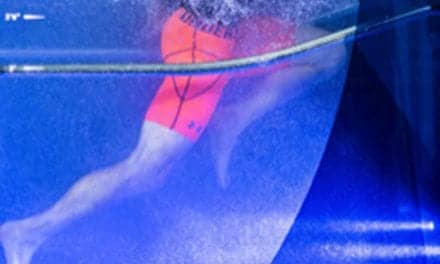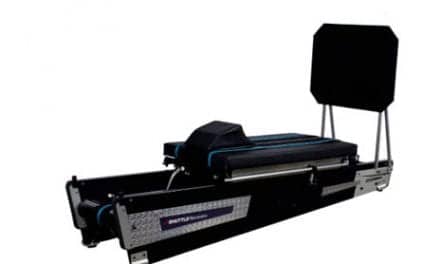The National Athletic Trainers Association (NATA) has released consensus recommendations and best practices for emergency prehospital care of spine-injured athletes in American football. These guidelines were presented during the 2020 NATA Virtual Clinical Symposia & AT Expo, which transitioned to a virtual event in light of COVID-19.
Two articles stemming from meetings of the Spine Injury in Sport Group (SISG) were advance released and published in the June Journal of Athletic Training, the National Athletic Trainers’ Association (NATA) scientific publication.
The first, “Best Practices and Current Care Concepts in Prehospital Care of the Spine-Injured Athlete in American Tackle Football Players,” outlines best practices and practical applications. “Consensus Recommendations on the Prehospital Care of the Injured Athlete with a Suspected Catastrophic Cervical Spine Injury,” outlines the Delphi process, which identified eight key questions to be answered by systematic review and was used to come to a consensus. The review screened 1,544 studies, 49 of which were included in the final full-text review. Additionally, a training film was created to complement the recommendations and to visually communicate the guidelines across medical professions and other key stakeholders.
To mirror the diverse health care professions that may be involved in a spine injury, the SISG consisted of 25 health care professionals in athletic training, emergency medicine, sports medicine, neurologic surgery, orthopaedic surgery, neurology, physiatry and research. The National Athletic Trainers’ Association (NATA), The Sports Institute at UW Medicine, National Collegiate Athlete Association (NCAA), and the Harborview Injury Prevention and Research Center (HIPRC) were instrumental in the process and creation of materials, a media release from NATA explains.
Key Recommendations
- Athletic programs should have an emergency action plan (EAP) developed in conjunction with local emergency medical services agencies specific to pre-hospital spine-injury care. Best practices are for an athlete with a suspected spinal injury to be transported to a designated Level 1 or 2 trauma center as quickly and safely as possible.
- Sports medicine teams should conduct a pre-event medical time out before each athletic event (practices and competitions). Participating in these “time outs” should include medical personnel from both teams, EMS personnel and game officials.
- When feasible, those with the highest level of training and experience in removal techniques should participate in equipment removal. Athletic trainers are recognized as the medical professional with the most training and experience in athletic equipment removal.
- Removal of the helmet and shoulder pads can occur in the emergency room or on the field. There are potential advantages to on-field removal prior to transport to the hospital, such as improved airway management, access to the chest for CPR, and expedited care of the athlete.
- If a spine board is used in the care of an athlete with a suspected cervical spine injury, non-athlete data recommends that time on the board be minimized, however, the board is left in place for transport to the hospital.
- If feasible, spine-injured athletes should be transported to a medical facility that can deliver immediate and definitive care in the event the athlete has a significant cervical spine injury.
“When an athlete is suspected to have a spine injury, every moment and every movement counts. It is imperative that no matter the level of play, from peewee to professional, there is a health care professional, such as an athletic trainer, that creates venue-specific action plans, leads medical time outs and establishes relationships with allied medical professionals to ensure the best possible outcome for the athlete.”
— NATA President, Tory Lindley, MA, ATC
[Source(s): National Athletic Trainers Association, PR Newswire]
Related Content:
Parents Should Limit Sports Participation for Children, Trainers Say
Rise in Sports Injuries Spurs Athletic Trainers Regulation in California
High School Pitchers Should Not Also Play Catcher, NATA Research Suggests





